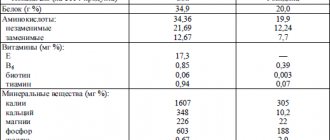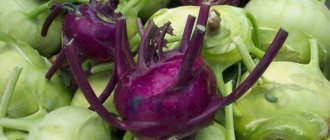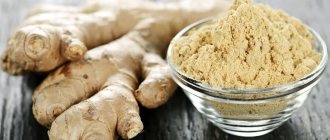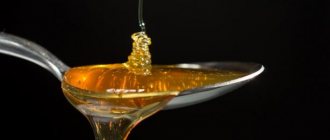Composition and calorie content of dried parsley
This seasoning has a high calorie content, but it is used in small quantities, so it cannot significantly affect the energy value of the finished dish. The spice contains a huge amount of various vitamins and minerals that have a healing effect on the human body.
Calorie content of dried parsley is 292 kcal per 100 grams of product, of which:
- Proteins - 26.63 g;
- Fats - 5.48 g;
- Carbohydrates - 50.64 g;
- Dietary fiber - 26.7 g;
- Water - 5.89 g;
- Ash - 11.36 g.
Vitamin composition of dried parsley per 100 g:
- Vitamin A, RE - 97 mcg;
- Alpha Carotene - 17 mcg;
- Beta Carotene - 1.152 mg;
- Beta Cryptoxanthin - 4 mcg;
- Lutein + Zeaxanthin - 2428 mcg;
- Vitamin B1, thiamine - 0.196 mg;
- Vitamin B2, riboflavin - 2.383 mg;
- Vitamin B4, choline - 97.1 mg;
- Vitamin B5, pantothenic acid - 1.062 mg;
- Vitamin B6, pyridoxine - 0.9 mg;
- Vitamin B9, folate - 180 mcg;
- Vitamin C, ascorbic acid - 125 mg;
- Vitamin E, alpha tocopherol, TE - 8.96 mg;
- Beta Tocopherol - 0.02 mg;
- Gamma Tocopherol - 1.53 mg;
- Vitamin K, phylloquinone - 1359.5 mcg;
- Vitamin RR, NE - 9.943 mg;
- Betaine - 1.7 mg.
Macroelements per 100 g:
- Potassium, K - 2683 mg;
- Calcium, Ca - 1140 mg;
- Magnesium, Mg - 400 mg;
- Sodium, Na - 452 mg;
- Phosphorus, Ph - 436 mg.
Microelements per 100 g:
- Iron, Fe - 22.04 mg;
- Manganese, Mn - 9.81 mg;
- Copper, Cu - 780 μg;
- Selenium, Se - 14.1 μg;
- Zinc, Zn - 5.44 mg.
Digestible carbohydrates per 100 g:
- Glucose (dextrose) - 2.76 g;
- Sucrose - 4.09 g;
- Fructose - 0.42 g.
Essential amino acids per 100 g:
- Arginine - 1.756 g;
- Valine - 2.021 g;
- Histidine - 0.718 g;
- Isoleucine - 1.546 g;
- Leucine - 2.794 g;
- Lysine - 2.098 g;
- Methionine - 0.596 g;
- Threonine - 1.193 g;
- Tryptophan - 0.475 g;
- Phenylalanine - 1.712 mg.
Essential amino acids per 100 g:
- Alanine - 1.778 g;
- Aspartic acid - 3.169 g;
- Glycine - 1.756 g;
- Glutamic acid - 3.688 g;
- Proline - 2.01 g;
- Serine - 1.159 g;
- Tyrosine - 1.159 g;
- Cysteine - 0.298 g.
Saturated, monounsaturated and polyunsaturated fatty acids per 100 g:
- Omega-3 - 1.86 g;
- Omega-6 - 1.264 g;
- Palmitic – 1.223 g;
- Stearic acid - 0.058 g;
- Arachina - 0.005 g;
- Begenovaya - 0.028 g;
- Lignoceric – 0.063 g;
- Oleic (Omega-9) - 0.761 g;
- Linoleic acid - 1.248 g;
- Linolenic – 1.876 g.
Oils
Not only the leaves with stems and roots of parsley are used for food purposes - the oil is no less in demand. It is extracted from the seeds of a plant, the composition of which is much richer in oils compared to other parts. The main components of the product are apiol, apiolaldehyde and pinene. However, the oil from the green part is more aromatic, and therefore acts as a good flavoring agent for meat dishes, vegetables, sauces and drinks. The calorie content of parsley oil is high - 899 kcal per 100 grams. But the benefits are obvious: when consuming oil, a person receives a tonic, diuretic, antispasmodic and mild laxative effect. For pathologies of the gastrointestinal tract and nervous system, the oil looks like a high-quality medicine. Its content of large amounts of vitamin C and iron provides a beneficial effect on the circulatory and immune systems.
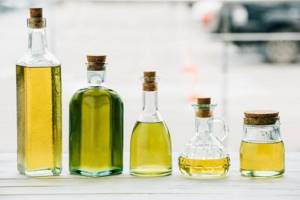
Beneficial properties of dried parsley
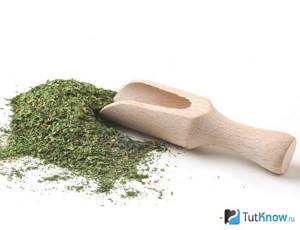
It is valued for its specific, pronounced aroma, the presence of vitamins and minerals beneficial to the human body, and its healing effect. What are the benefits of eating dried parsley:
- Improves the general condition of the nervous system
. This seasoning contains choline, which has a calming effect. Parsley is useful for depression and for restoring strength. - Increases attention
. This spice has a positive effect on human brain activity due to vitamin B9 in its composition. - Quickly quenches thirst and improves appetite
. The vitamin composition of dried parsley helps to cope with these problems. - Strengthens the immune system
. A large amount of vitamins, and especially folic acid in this seasoning, have a beneficial effect on the immune system. - Restores the body's vitamin balance
. Numerous B vitamins, as well as ascorbic acid, help replenish the amount of nutrients in case of vitamin deficiencies. And folic acid is needed by the body to form hemoglobin. - Relieves swelling
. Dried parsley acts as a diuretic. But you should not abuse it, so as not to remove a lot of salt from the body. - Helps with colds
. This seasoning has anti-inflammatory properties, so it is recommended to use it for ARVI. - Good for the pancreas and liver
. It has a choleretic effect and is known as a prophylactic for diseases of these organs. - Improves the functioning of the cardiovascular system
. Due to the rich vitamin composition of parsley, it is recommended to be consumed by people with heart and vascular diseases. - Useful for diabetics
. This seasoning contains inulin, which has the ability to normalize blood sugar. - Helps get rid of excess weight
. Consumption of this seasoning normalizes fat metabolism in the body and eliminates cellulite. - Removes harmful toxins from the body
. This is facilitated by beta-carotene, which is found in more in this spice than in carrots. - Indicated for consumption by pregnant women
. This spice contains folic acid, which is very useful for this category of people. But dried parsley should be consumed in moderation, because it stimulates the uterus and can cause premature labor. - Normalizes potency
. The use of this seasoning improves libido in men.
Harm and contraindications to the use of dried parsley

Who should avoid using this spice:
- Patients with problems of the genitourinary system
. This seasoning has a diuretic effect, so it is worth limiting its use in case of diseases of these organs. - Patients with chronic diseases of the gastrointestinal tract during exacerbation
. Dried parsley is still a spice, and it should not be used without a doctor’s permission if you have such problems. - People with individual intolerance
. Dried parsley can cause allergic reactions, like any other product, especially in those whose bodies do not take vitamin C.
Recipes for dishes with dried parsley

By the way, its strong smell only complements other seasonings in dishes. Recipes for dishes with dried parsley:
- Omelet with parsley
. Beat 3 eggs with 150 g of milk. Add 10 g parsley, 2 g ground black pepper, salt to taste. Fry the omelette in sunflower oil (10 g) in a heated frying pan. This dish doesn't take very long to prepare, so it's perfect for breakfast. - Homemade chicken sausage with spices
. Ingredients: 750 g chicken breast, 100 ml water, salt to taste, 1 teaspoon each of dried garlic, dried parsley and ground black pepper, 0.5 teaspoon of universal meat seasoning. First, we cut the meat from the bones and weigh it, we need, as indicated in the ingredients, 750 g. Then we cut the chicken meat into medium-sized pieces, add salt and water, mix well and leave it in the refrigerator for 2 days. After this period, you need to add spices, mix again and leave to soak for a couple of hours. Now is the time to form the sausages. Both artificial and natural shells are suitable for this. You need to cook the product in a saucepan with water over low heat for 3 hours. Let it cool and you are ready to eat. Bon appetit! These sausages are tastier and much healthier than the store-bought product. - Pork neck baked in foil
. We will need 1 kg of pork neck, 4 tablespoons of pork fat, 8 cloves of garlic, 120 ml of soy sauce, 1 tablespoon of mustard, 1 teaspoon of dried parsley, salt and pepper to taste. So, salt, pepper and coat the meat with fat. Now let's prepare the marinade. To do this, mix the sauce, mustard seeds, garlic through a garlic press, and parsley in a bowl. This mixture should be thoroughly spread on the meat and left to soak for 5 hours. We pull out our pork, wrap it in foil and place it in a baking dish, while not forgetting to pour 3/4 cup of water. First, bake in the oven for 1.5-2 hours, then unfold the foil and continue baking for 30 minutes so that the meat is browned. Cool the dish and cut into pieces. They eat this meat as a cold appetizer. - Cheese puree soup with spices
. Take 4 potatoes, a carrot, an onion, 2 processed cheese, 2 tablespoons of olive oil, salt and black pepper to taste. We also need a pinch of ground coriander, a pinch of ground nutmeg, red pepper on the tip of a knife, 1 teaspoon of dried parsley and a little yellow mustard seeds. First, bring the diced potatoes to a boil, then add the processed cheese, which also needs to be cut into pieces. We fry carrots and onions, put them in a pan and cook until tender. At the end of cooking, add salt, pepper and spices. Beat with an immersion blender. Eat hot. - Chicken fillet with cheese and tomatoes
. First of all, cut 500 g of meat into pieces, beat with a kitchen hammer, salt and pepper to taste. Then prepare a sauce from 200 g of sour cream, 10 g of dried parsley, 10 g of dried dill and 2 cloves of chopped garlic. Now dip each piece of meat in the sauce, put a slice of tomato on top (we need 2 pieces), and then grated cheese (200 g). Place the prepared meat on a baking sheet. Baking time is 10 minutes and temperature is 180 degrees. - Almond dressing
. For this recipe we need to take 150 ml of water, 30 ml of lemon juice, 120 g of almonds, 1 clove of garlic, 2 tablespoons of dried parsley, 0.5 teaspoon of dried dill, salt to taste. First you need to soak the almonds overnight. Then grind it in a blender. Then mix with water and lemon juice. After this, add chopped garlic, dill, parsley and salt. Beat again using a blender, place in a container with a lid and cool. - Manti with pumpkin and lard
. Ingredients: pumpkin (500 g), 3 onions, lard (100 g), wheat flour (500 g), water (0.5 cup), vegetable oil (2 tablespoons), dried parsley (1 tablespoon), salt and ground red pepper to taste. First, grate the pumpkin and onion on a coarse grater. Then we pass the lard through a meat grinder and add it to the vegetables. Don't forget about salt, pepper and parsley. Mix all these products. After this, knead the dough from flour, water and salt, roll out thinly and cut out squares 10 by 10 cm. Now we use them to make manti with pumpkin and onion filling. We will steam it on a special grill greased with vegetable oil. They eat manti with sour cream.
It should be remembered that dried parsley must be added to heat-treated dishes. In addition, you should take a little of this seasoning, in moderation, because it has a very pronounced aroma.
Application
As a rule, parsley is used to decorate salads, add to soups and any stewed or fried dishes. However, a few sprigs or leaves of parsley won't do much good, so the best way to consume parsley for its health benefits is to juice it. It is enough to drink 20-50 g of juice every day to notice the effect. Since greens are very rich in nutrients, overdosing should be avoided. Parsley in large quantities is contraindicated for pregnant women.
Market Analytics
- Black Lives Matter movement: reaction and consequences for the beauty industry
- COVID-19 is changing the rules of the game in the cosmetics market
- Beauty of the future: cosmetic innovations 2021
Convenient search for beauty salons on our website
Beauty salons in Moscow Beauty salons in St. Petersburg Beauty salons in Ekaterinburg Beauty salons in Novosibirsk
Latest blog posts on our website
- Naturecream / Tremella Extract - Snow Mushroom Detox for Skin
- Prostye-sovety / How to visually enlarge your lips with makeup
- Naturecream / Apricot kernel oil for face
- Naturecream / MATRIXYL3000 - the best skin elasticity stimulator
- Naturecream / SPF in Natural Oils
- Naturecream / Geranium (Pelargonium) oil for skin health and beauty
- Prostye-sovety / Save on a beauty salon: procedures that can be done at home
- Naturecream / Growth Factor - brings back youth?
- Oksana-Lezina / 3 effective abdominal exercises from a fitness instructor for beginners
- Prostye-sovety / Making perfect curls at home
Latest forum topics on our website
- Natalya / How to properly make a gelatin mask?
- Mrs._Smith / Badly sunburned! What to do?((
- Ice / Is it necessary to combine fitness classes with a diet?
- Antonova / What can be used for hair loss?
- Radio operatorKat / Who was on a protein diet?
Other articles in this section
| Perilla Perilla vegetable is a perennial plant of the Lamiaceae family. Common in Japan, China and Korea, where it is often used as a seasoning. The Japanese name for perilla is shiso. The climate of central Russia is unfavorable for the plant, so here perilla becomes an annual plant. Perilla is divided into two types, with green and purple leaves. The green variety is similar to stinging nettle, and the purple leaves are easily confused with purple basil. Perilla is sometimes called "Japanese parsley", although it has nothing to do with parsley. |
| Roasted zucchini Zucchini belongs to the pumpkin family. Resembling the shape of a cucumber, mature fruits can reach a length of 50-70 cm. Unlike zucchini, zucchini is covered with a light yellow peel. Its homeland is Latin America. It was brought to Europe by conquistadors in the Middle Ages. The vegetable is rich in nutrients and is very popular in Russian cuisine. |
| Purple Potatoes Purple potatoes are a type of sweet potato. Its homeland is the tropics of South America. It is sometimes called Japanese because purple potatoes have been an important part of the daily diet of Okinawans for centuries. |
| Boiled beets Beetroot is a unique source of betalain alkaloids. It is they who give the root crop its purplish-red color. Unlike anthocyanins, which give a dark purple color, betalains are destroyed by heat treatment. This explains why beets turn pale during cooking. |
| Eggplant The homeland of eggplant is India, where this dark purple vegetable of the nightshade family has been grown for more than four thousand years. Due to its beneficial properties, eggplant is often found in Eastern and European cuisine, especially in vegetarian dishes. |
| Celery (root) Celery is a biennial or perennial plant of the Apiaceae family, a relative of carrots and parsley. Celery root has been used in folk medicine for hundreds of years, dating back to the times of Ancient Greece. Due to its nutritional qualities, the root vegetable perfectly replaces potatoes, which is why it is very popular in the cuisine of European countries. |
| Black garlic Black garlic was first produced in South Korea, where it became very popular due to its nutritional properties. Unlike regular garlic, its black cousin contains almost twice as many antioxidants, is rich in natural sugars and amino acids, and does not contain the components that cause the usual pungent garlic smell. Garlic turns black through a special fermentation process, a method invented in the early 2000s. |
| Garlic (pickled arrows) The benefits of garlic are mentioned even in the Bible and the Koran. Records of garlic are found on Sumerian cuneiform tablets dating back to 2300 BC. e. In ancient Egypt, garlic was revered as a sacred plant and was used for embalming. The arrows of garlic are similar to the arrows of green onions. At the end of the arrow, a flower blooms, and then a small box with seeds ripens. |
| Sorrel Sorrel is a leafy vegetable similar to spinach. The homeland of this vegetable plant is in Europe, it is especially popular in Eastern European countries. The main component of sorrel is oxalic acid, thanks to which it acquires its unusual sour taste. |
| Mitsuna salad The leaves of Mitsuna salad resemble arugula leaves - with the same deeply cut edges. Like arugula, Mitsuna lettuce is a close relative of mustard greens, so it’s a stretch to classify it as a salad. This plant is especially popular in Japan and is rarely found in European countries. In Japan, Mitsuna lettuce has been cultivated since ancient times, but its homeland is believed to be China. The plant tolerates cold well and is suitable for growing in cold regions. |

